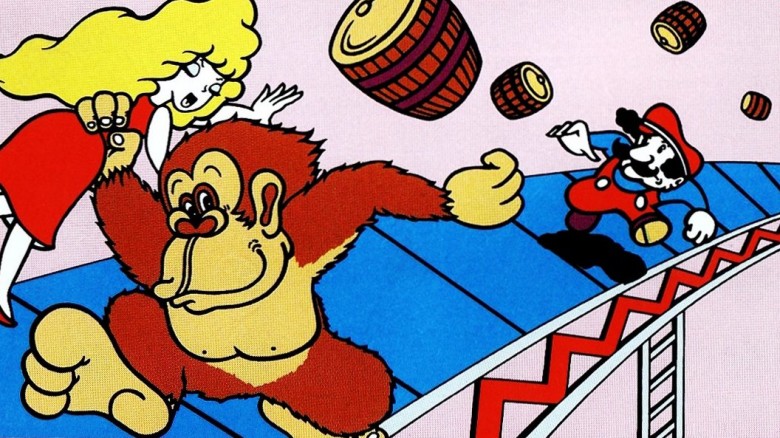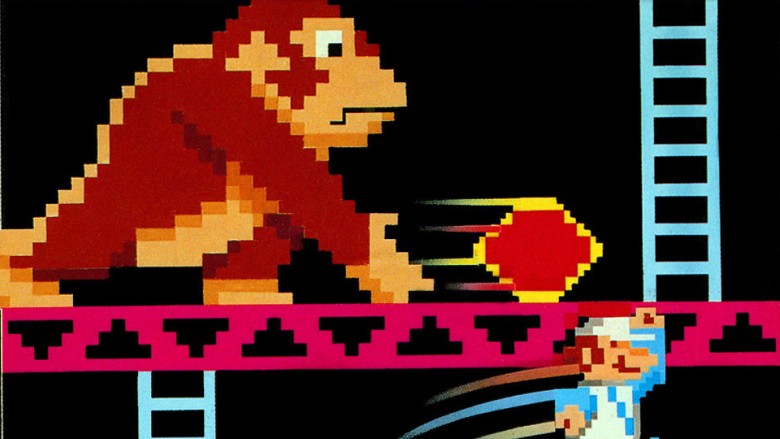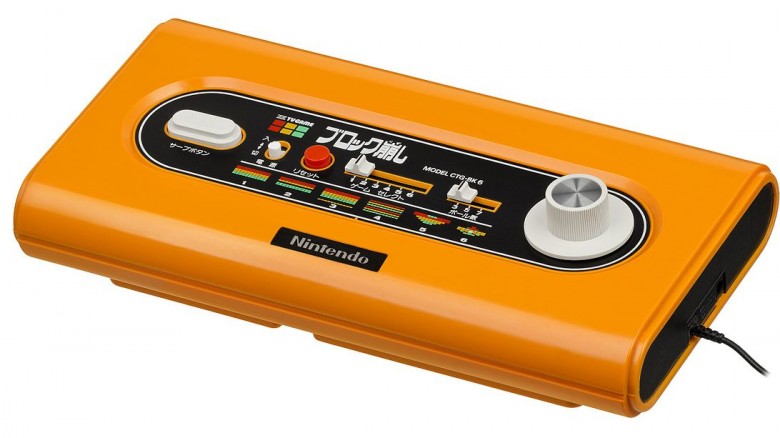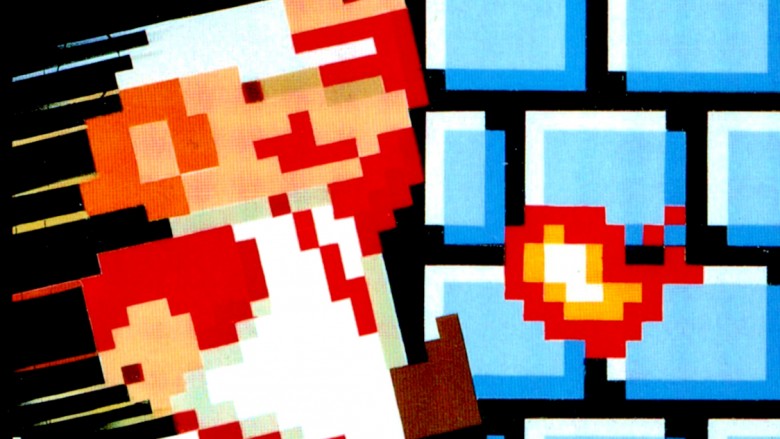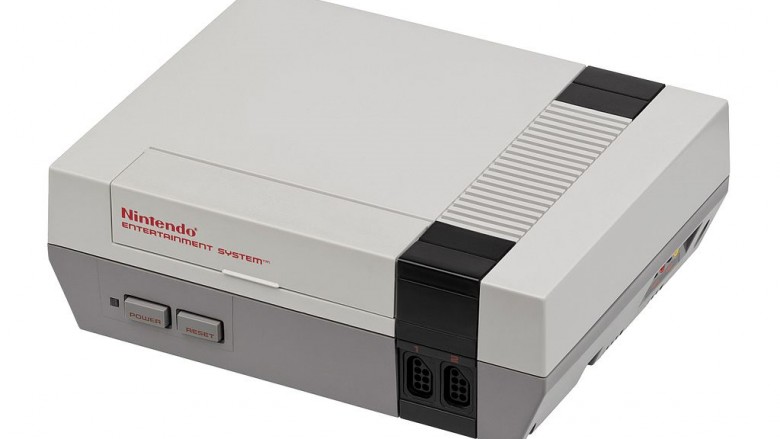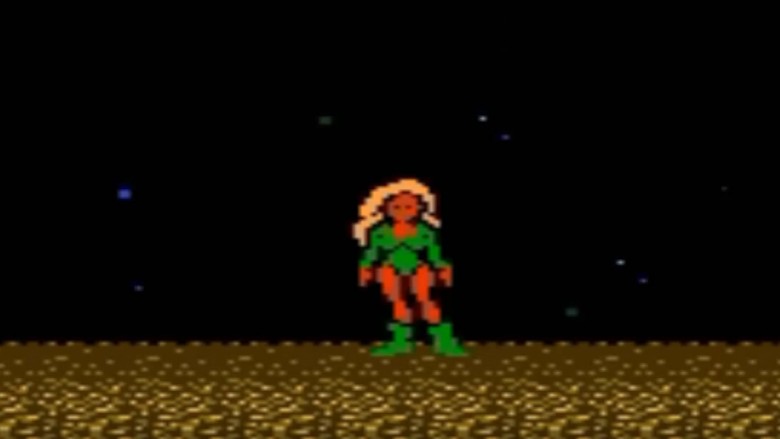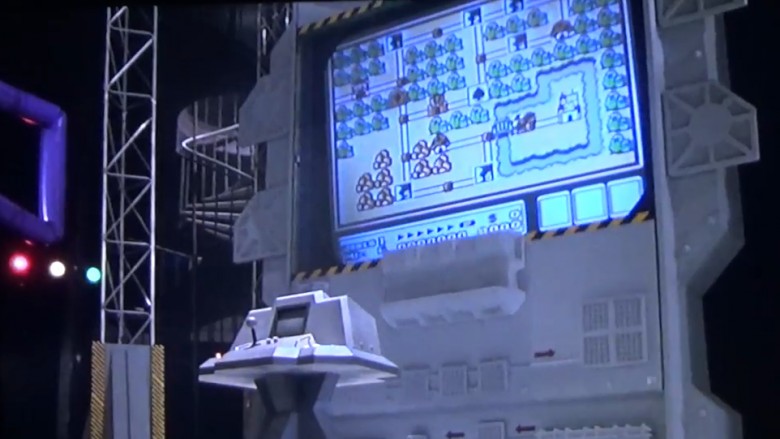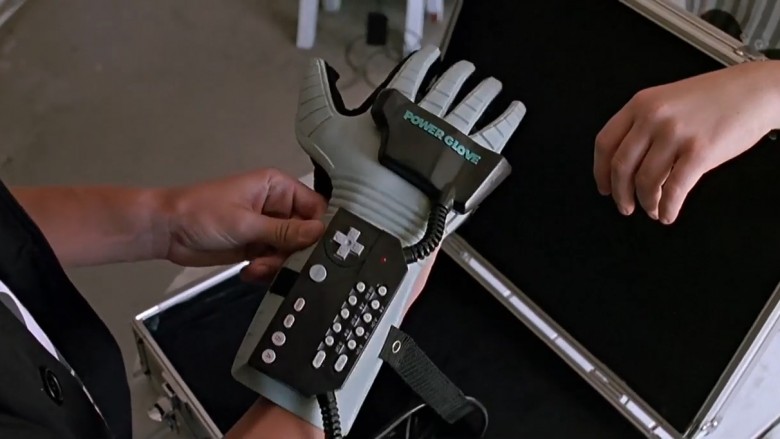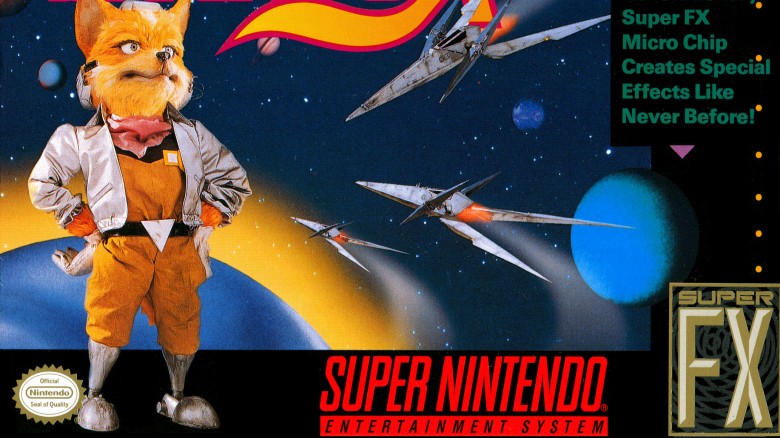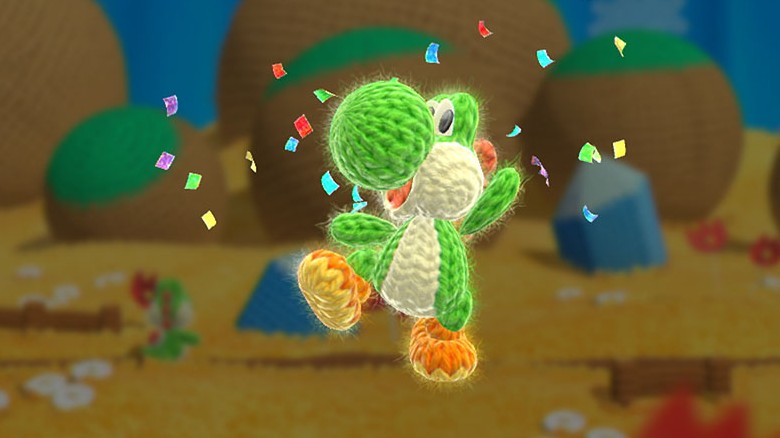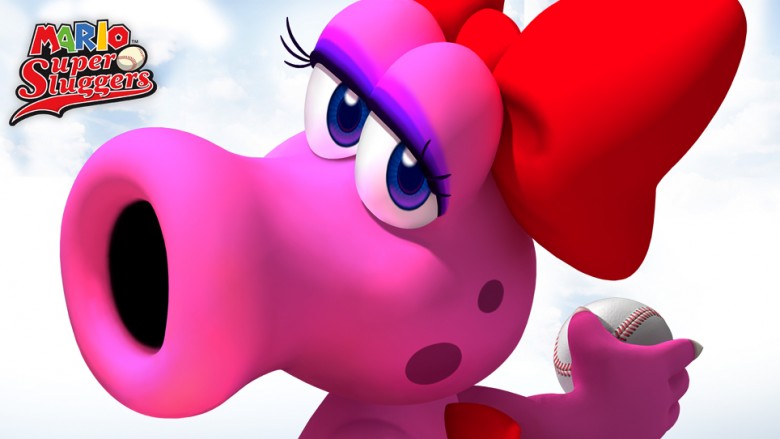False Nintendo Facts You Always Thought Were True
You think you know Nintendo, but you don't. Oh, sure, maybe you can rattle off the names of all of the Koopa Kids. Maybe you've got a shiny Mewtwo in your (fully-complete) Pokédex, and maybe you can finish Ocarina of Time's Water Temple with your eyes closed. But that doesn't mean you know everything. Some of the most popular, well-known pieces of Nintendo trivia simply aren't true, no matter how much you wish they were:
Mario's original name was Jumpman
When Mario made his big debut in Donkey Kong, he wasn't called Mario. As the story goes, Nintendo's mascot was originally called Jumpman (woo), since his big superpower (and the key to Donkey Kong's success) was, well, jumping. And that's all true, but Jumpman wasn't Mario's original name, either.
According to none other than Shigeru Miyamoto, the man who created Mario, "I called [Jumpman] 'Mr. Video.' My plan was to use the same character in every video game I made," Miyamoto explains. Apparently, Miyamoto was inspired by Alfred Hitchcock, who made brief cameos in every single one of his movies, and manga artists like Osamu Tezuka and Fujio Akatsuka, who had recurring characters that appeared in different series. Miyamoto thought Mr. Video could fill a similar role. Thankfully, though, he changed his mind fast on the name. "I don't think I should have gone with that name," Miyamoto admits. "If he had been called 'Mr. Video,' he might have disappeared off the face of the Earth." You don't say.
Mr. Video wouldn't be the last time Miyamoto would give a character a boring or strange moniker. Mario's first love interest, Pauline, was originally just called Lady. Mario's last name is also Mario (explaining why Luigi can be a Mario brother). And, as we mentioned in the past, the full name of The Legend of Zelda's main character is ... "Link Link." For all his game design prowess, Miyamoto kind of sucks at naming characters.
Donkey Kong is a mistranslation of "Monkey Kong"
Case in point: Donkey Kong is a weird, weird name—especially for a character who's an ape, not a pack animal. In fact, it's so strange, many fans assume "Donkey" was supposed to read "Monkey," and the current spelling is nothing more than a translation error.
It's not. According to Miyamoto, "I looked up 'donkey' in the dictionary and found that it could also be used to mean 'goofy,'" meaning that the actual definition of Donkey Kong's name is "Goofy Monkey" (the Kong part is a reference to King Kong, naturally).
Of course, to native English speakers, that name still doesn't make any sense, and Miyamoto knows it. Nintendo of America pushed back on the name—which, once again, is gibberish—noting that nobody who actually speaks English thinks that "donkey" means "goofy," but Miyamoto, stubborn to the end, insisted that they keep the name anyway. At least he didn't call him Donkey Donkey.
The NES was Nintendo's first home console
The NES might be the system that made the Japanese game-maker synonymous with video games, but it wasn't actually Nintendo's first attempt to infiltrate the homes of players around the world. In the late '70s, Nintendo released a handful of home consoles in Japan under the Color TV-Game banner, that brought some of Nintendo's biggest arcade games into players' living rooms.
But there's a reason you've never heard about the Color TV-Game system: it kinda sucked. The plug-and-play consoles came out before Donkey Kong, Nintendo's first big hit, and most of the titles included on the Color TV-Game consoles were just knock-offs of other, more popular games. The first two systems, Color TV-Game 6 and Color TV-Game 15, tried to gussy up its offerings with names like Hockey and Volleyball, but each one was just a slightly different version of Pong. Color TV-Game Block Breaker contained a single-player Breakout clone, while the last entry — simply called Computer TV-Game — only played one game: a computer version of the board game Othello, aptly named Computer Othello. It's about as exciting as it sounds.
Still, the Color TV-Game line wasn't a complete bust. Not only did the Color TV-Game line sell around 3 million copies, but the Color TV-Game Block Breaker was the first Nintendo product made by Miyamoto, who went on to create virtually every Nintendo character you love. So all-in-all, things worked out pretty well for the big N.
Super Mario Bros. was an NES launch title
Super Mario Bros. might be the Nintendo Entertainment System's flagship title—it even came with most of the consoles—but unlike Super Mario World or Super Mario 64, Super Mario Bros. wasn't actually a launch title .. at least, not as far as we can tell.
In Japan, everything is pretty clear. The Famicom (the Japanese name for the NES) came out on July 15, 1983, while production on Super Mario Bros. didn't begin until early 1985. Boom. Case closed.
For the US release, things get a little dicier. Video game historians, citing interviews with former Nintendo of America executives Howard Lincoln, Minoru Arakawa, and Howard Phillips, typically agree that Super Mario Bros. came out sometime in 1986, while the NES itself hit the US on October 18, 1985. But not all sources agree. Nintendo's official database says Super Mario Bros. launched alongside the NES on October 18, while an internal Nintendo database (provided to researchers by an anonymous source) actually puts Super Mario Bros.' release date a month later, on November 17, 1985—a claim that's backed up by some mid-'80s marketing materials.
So, if Super Mario Bros. wasn't out, what were people playing instead? In Japan, early adopters must've really liked Donkey Kong—in addition to Donkey Kong and Donkey Kong Jr., the Famicom's third and final launch game was Nintendo's Popeye, which is just a Donkey Kong rip-off with spinach in place of bananas. In America, fans were enjoying "classics" like 10-Yard Fight, Hogan's Alley, and Stack-Up ... oh, and Duck Hunt, which actually holds up pretty well.
Blowing into NES cartridges helps the NES read them better
Every kid knew the trick: if the NES was having trouble reading a game, you had to take the cartridge out, blow into it as hard as you could, and then put the game back in. We didn't know why it worked. It just did.
Or did it? In the years following the NES' golden age, many researchers have tried to figure out why blowing into the carts had the effect it did, and they've all come up empty. The crew of PBS' It's Okay to Be Smart and the staff at Mental Floss think they've figured out why: the Placebo Effect. Apparently, what actually made a difference was simply removing and reinserting the game cartridge. Blowing into it was just so much hot air.
See, the pins the NES uses to connect cartridges to the console are cheap, and wore out quickly. If you combine the pins' well-documented problems with the dirt that built up inside the machine after spending months on the living room floor, it becomes pretty difficult to get a reliable connection on the first, second, or tenth try. But keep inserting and reinserting, and you should get a connection eventually.
In fact, blowing into your favorite games might've actually made things worse. Nintendo's instruction manual warns that "your breath can corrode and contaminate the pin connectors," while Mental Floss claims that the extra moisture might also make mold and mildew more likely to grow inside the machine.
Putting a second cartridge on top of the one you want to play in order to weigh the original game down, however? Yeah, that totally worked.
Justin Bailey is a programmer who worked on Metroid
Years before hackers transformed Tomb Raider into Nude Raider, teenage horndogs could catch a sweet, sweet glimpse of digital skin by finishing Metroid in under an hour, unlocking a steamy special ending in which Samus appeared in her underwear. If that wasn't titillating enough, fans could also input the name "JUSTIN BAILEY" at the game's password screen to strip Samus down to her swimsuit-like Zero Suit, which is pretty much the sexiest outfit ever crammed into 26 by 48 pixels.
But just who is this digital flesh-peddler? Common wisdom holds that Justin Bailey was a programmer who worked on Metroid, but that's debunked by the game's end credits, where neither a Justin nor a Bailey appears. Other people claim that "Bailey" is an English and Australian name for a bathing suit and that the password is a pun—i.e. "just in a bailey"—but our friends across the Atlantic claim that no such term exists. We believe them.
According to George Sinfield, a former writer for Nintendo Power, the password's resemblance to a real-life name is just a chance occurrence. Given how many variables Metroid keeps track of, the game doesn't use pre-programmed passwords, and instead generates codes on the fly. In fact, Justin Bailey isn't the only password that traps Samus in her skivvies—"000000 000020 000000 000020" works too—so the whole thing is probably a coincidence.
But if the passcode is just a chance occurrence, how did anybody find it? Sinfield has a theory. "I wrote the 'Classified Information' section back then and got tips and tricks from a lot of sources, including players who sent us letters," Sinfield says. "My guess is that someone named Justin Bailey wrote to Nintendo with the code after inputting his own name and getting interesting results." Either way, we can all agree on one thing — Samus wouldn't survive a second on Zebes in her undies, so the code making her do so is just cruel. Spacesuits exist for a reason, you know.
Competitors played Super Mario 3 at the Nintendo World Championships
When you think of the Nintendo World Championships, you probably remember the climax of the 1989 kids' film The Wizard, where the movie transforms from a charming coming-of-age comedy into a big-budget commercial.
Near the end of the movie, Fred Savage's little brother enters the "Video Armageddon" game tournament, in hopes of winning the $50,000 grand prize. After a grueling competition, the child demolishes his opponents in a round of Super Mario Bros. 3 (which oh-so-conveniently debuted in America a couple months after the movie came out), making every '80s kid jealous and transforming Super Mario Bros. 3's warp whistle into the worst-kept secret in video game history.
But that's not how the actual Nintendo World Championship tourney, which was modelled after The Wizard, went down. For one, NWC competitors were segmented into three different age categories, so you'd never have a small child competing against teenagers. Secondly, Nintendo World Championship winners received a $10,000 savings bond, a television set, a Geo Metro Convertible—which we're sure was very useful for the winner of the 11-and-under category—and a copy of the Nintendo World Championships game cartridge, which is worth over $100,000 in today's collectors' market.
Even worse, Super Mario Bros. 3 didn't appear at the tournament at all. Not even once. Instead, competitors faced three separate challenges: they had to collect 50 coins in the original Super Mario Bros., complete one lap in Rad Racer, and then rack up as many points as possible in Tetris before time ran out. Finally, real-life NWC winners didn't get to make out with Rilo Kiley, but given that she was only 14 at the time, that's probably for the best.
Nintendo developed the Power Glove
The Power Glove's signature moment comes about halfway through The Wizard, when Lucas Barton, the ultimate '80s cool kid stereotype and the best teenage villain in movie history, makes a fist and says, "I love the Power Glove. It's so bad!"
Lucas was right, though not in the way he expected. If you've never tried one, take our word for it: the Power Glove is flat-out terrible. While The Wizard sells the Power Glove as a magical device that'll miraculously let you use every-day motions to control your favorite games—while wearing the Power Glove, Lucas moves his hand like he's holding a steering wheel and gets a new high score in Rad Racer—in reality, it barely works.
Don't blame Nintendo, however. While the Power Glove's black-and-grey design makes it look like a Nintendo product, it was actually designed by Abrams/Gentile Entertainment and manufactured by Mattel, who used cheap parts that barely registered players' movements. All Nintendo did was slap its logo on the box. That makes some sense, given that Nintendo usually holds its products to a much higher standard ... though they did make the Virtual Boy. Maybe that Nintendo Seal of Quality is kind of a sham.
The cast of Star Fox has robotic legs after receiving mandatory amputations
On the surface, Star Fox might look like a family-friendly spin on space operas like Star Wars or Wing Commander, but according to some fans, the game has a pretty serious dark side. If you look closely at Star Fox's cast of furry-tastic characters—especially as depicted via the puppets used in Star Fox's promotional materials, and in Nintendo Power's spin-off comic—you might notice it looks like the characters have mechanical legs that start around their knees. Some Star Fox aficionados surmise that the Star Fox crew had their lower legs hacked off and replaced with prosthetics, in order to help them endure the G-Forces suffered during high-speed flight. In fact, that story has become so popular, it's pretty much accepted as truth among Star Fox's fan community.
But what does Dylan Cuthbert, Star Fox co-creator, say? "What? What? That's just made up," Cuthbert laughs, after the gentlemen at GameXplain ask him about the long-held theory. "They're just boots. They're metal boots," Cuthbert continues. "People have the weirdest imaginations." Shigeru Miyamoto, who produced Star Fox, agrees. "That sounds painful so I'm not really a fan of that theory," Miyamoto tells MTV News. "It's very sci-fi, so it's interesting, but it's not true."
Besides, if they were going to remove any part of the Star Fox team's body, they would've started with Slippy's vocal chords.
Yoshi is male
To the chagrin of many fans, Nintendo's games tend to stick to pretty traditional gender roles, at least when human characters are involved. Mario is the hero. Peach is the damsel in distress. Link, the hero of Hyrule, might look effeminate, but he's definitely a fella.
When it comes to Nintendo's animal characters, gender gets much more confusing. Take Yoshi, for example. In English, Mario's dinosaur pal is typically referred to using masculine pronouns, but he also lays eggs, which is not something that males typically do. Partly, this can be explained by how, as proved in Yoshi's Island: Super Mario World 2, a Yoshi is a species, not an individual. Like, in Paper Mario: The Thousand Year Door, one Yoshi talks about his wife, while a pair of Yoshis—one male, one female—appear on the Yoshi's Tropical Island board in the very first Mario Party. This also explains how they can keep coming back after countless sacrifices.
So, some Yoshis are male. Some Yoshis are female. Easy enough. But still, how do you explain the damn eggs? According to the Japanese version of Super Smash Bros. Melee, Yoshis reproduce asexually, meaning that a Yoshi's gender doesn't actually matter at all, so just go ahead and use whatever pronoun you want. We won't judge.
Birdo is female
If you thought that figuring out Yoshi's gender was a pain, you're going to absolutely hate Birdo. While the character's long eyelashes and bow code Birdo as female—in fact, in the modern era, Birdo is typically positioned as Yoshi's lady friend, similar to Mario and Peach, Luigi and Daisy, and Toad and Toadette—the manual for Super Mario Bros. 2., where Birdo first appeared, says that Birdo "thinks he is a girl and he spits eggs from his mouth."
Does that mean Birdo's transgender? Maybe! After all, many transgender women tend to refer to themselves with female pronouns—not the labels associated with their birth sex—which would explain why more modern iterations of Birdo use "she" and "her," not "he" and "his." Unfortunately, it's more complicated than that. Birdo's Japanese bio for Mario Kart: Double Dash!! says that the character (known in the east as Catherine) "appears to be Yoshi's girlfriend, but is actually his boyfriend," implying that Birdo identifies as male.
Meanwhile, in the Japan-exclusive game Captain Rainbow, Birdo is arrested for using the women's restroom, and the player must search Birdo's house for evidence that she (he?) really is a woman. That leads players on a brief treasure hunt that ends when they find—no kidding—a blurred-out vibrator in Birdo's bedroom. This indicates that Birdo does indeed have lady parts (whether or not that's the result of gender-reassignment surgery is anybody's guess).
If anyone can sort this out, it's got to be Miyamoto and fellow Nintendo designer Takashi Tezuka, right? In an interview with MTV News, Tezuka and Miyamoto say that they never really decided on either Birdo or Yoshi's genders—and, judging by their clear disinterest in the topic, they have no plans to ever do so. So, that's about as clear as mud. But, hey, at least we know that Toad is definitely a dude, right?
Eh, maybe not...

